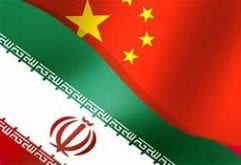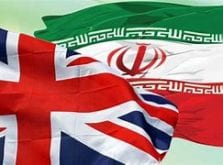Radiofarda – Donald Trump recently said that the Joint Comprehensive Plan of Action (JCPOA), or the Iran deal, “was such a disaster.” The United States exited the nuclear deal in May 2018, but is now insisting it never left the deal and can thus bring snapback sanctions into place and extend the arms embargo. This is part of the Maximum Pressure strategy. It wasdesigned to get a better deal that included stricterlimits on Iran’s nuclear capabilities, ending its ballistic missile program, interventions in other states (e.g., Afghanistan, Iraq, Syria, and Yemen) and support for terrorism.
Iran responded to Maximum Pressure with its own counter-pressure campaign. This included increasing support for the Popular Mobilization Units (PMUs) in Iraq, shooting down an American drone, bombing oil tankers in the Straits of Hormuz, and drone strikes against Saudi oil installations (Iran’s Houthi allies took responsibility, but the Saudi Defense Ministry insists the evidence points directly to Iran). The assassination of Qassem Soleimani by the U.S. in early January exacerbated tensions, followed by an increase in fighting between the PMUs and U.S. forces in Iraq as well as incidents at sea. This has raised the likelihood of war via inadvertent escalation.
In a nutshell, Maximum Pressure is failing because there is an imbalance between diplomacy and force, and a lack of signals suggesting that good behavior by Iran will be reciprocated. Like the oil embargo imposed on Japan in 1941, Maximum Pressure has made Iran more intransigent. Both sides appear locked in an escalatory spiral like the one that preceded World War One.
The status quo is all the more worrying because neither side seems ready to alleviate tensions. The U.S. House of Representatives’ overwhelming bipartisan support for extending the arms embargoincreases domestic pressure on Trump to maintain his hardline policy. Backing away would risk losingpolitical support. On the other hand, Iran has reputational concerns. Iranian policy-makers likely worry that holding talks with the U.S. could hurt their reputation for resolve and possibly result in more demands.
This spiral may well get out of control if Iran decides to resort to table-turning cards that have been left off the game thus far. The IAEA reported that Iran has continued to give access to its sites but has not accounted for some of its past activities, while the country has been reneging on its commitments under the JCPOA. It could go further and completely withdraw from both the nuclear deal and the Nuclear Nonproliferation Treaty (NPT), just like North Korea in 2002. Iran could even inaugurate a crash nuclear program with the goal of acquiring a small handful of bombs, along with an accelerated effort to acquire a ballistic missile that can be mated to a warhead.
But Iran in the past has survived several crises while simultaneously revamping its weapons programs.Iran’s economic woes are insufficient to alleviate concerns. Some fear that an Iranian bomb would lead to reactive proliferation, wherein Iran’s neighbors would be compelled to start nuclear weapons programs of their own. Moreover, even a small Iranian deterrent could hinder the U.S.’ ability to project force in the region, undermining the credibility of its nuclear umbrella.
Pursuing the snapback and embargo renewal at the U.N. in October could see a re-run of the splits that took place among the U.S.’ allies in the run-up to the Iraq War in 2003. Furthermore, if the other parties to the Iran deal refuse to sign on to the U.S.’ position, and the U.S. maintains that it is still a participant in the JCPOA and snapback sanctions are necessary, it could wind up having to unilaterally enforce the sanctions.
A reduction in tensions is possible, but a long-shot. Iranian decision-makers could see any attempt at détente with the U.S. as a ruse to exploit them. Even if the Trump Administration provided additional carrots, Iran could renege on its commitments in the future. To mitigate this problem, the U.S. could reassemble the P5+1 and agree to rejoin the JCPOA if it meant ending the sunsetting of certain provisions, such as the arms embargo, and moving up the timetable of Iran’s adoption of the Additional Protocol to the NPT. In exchange, the Trump Administration would pay the political price of withdrawing the nuclear sanctions that it began putting into place in 2018.
Some may argue that this would not satisfy Russia and China. However, China could be brought aboard if assurances were made that regime change wouldbe taken off the table. In contrast to U.S. observers, many Chinese see Iran as a fragile “linchpin” of the Middle East. China wants access to Iran’s oil, but is believed to be even more scared of the unknown unknowns that surround regime change. Assurances on no regime change and reversing sanctions could also bring Russia to the table.
The U.S. and Iran are caught in a risk-taking competition similar to the one that preceded World War One. That conflict so exhausted the great powers that it ended without “winners.” There is no reason to expect a different outcome in a potential war between the U.S. and Iran. For the U.S., it would only result in another costly war of choice. This conflict can be avoided by both sides if costly, reciprocal measures of reassurance are undertaken.
- Dr. Albert B. WolfDr. Albert Wolf is the Dean of the College of International Studies at the American University of Kurdistan, Duhok and an Adjunct Fellow at the Begin-Sadat Center for Strategic Studies.
 Shabtabnews In this dark night, I have lost my way – Arise from a corner, oh you the star of guidance.
Shabtabnews In this dark night, I have lost my way – Arise from a corner, oh you the star of guidance.


